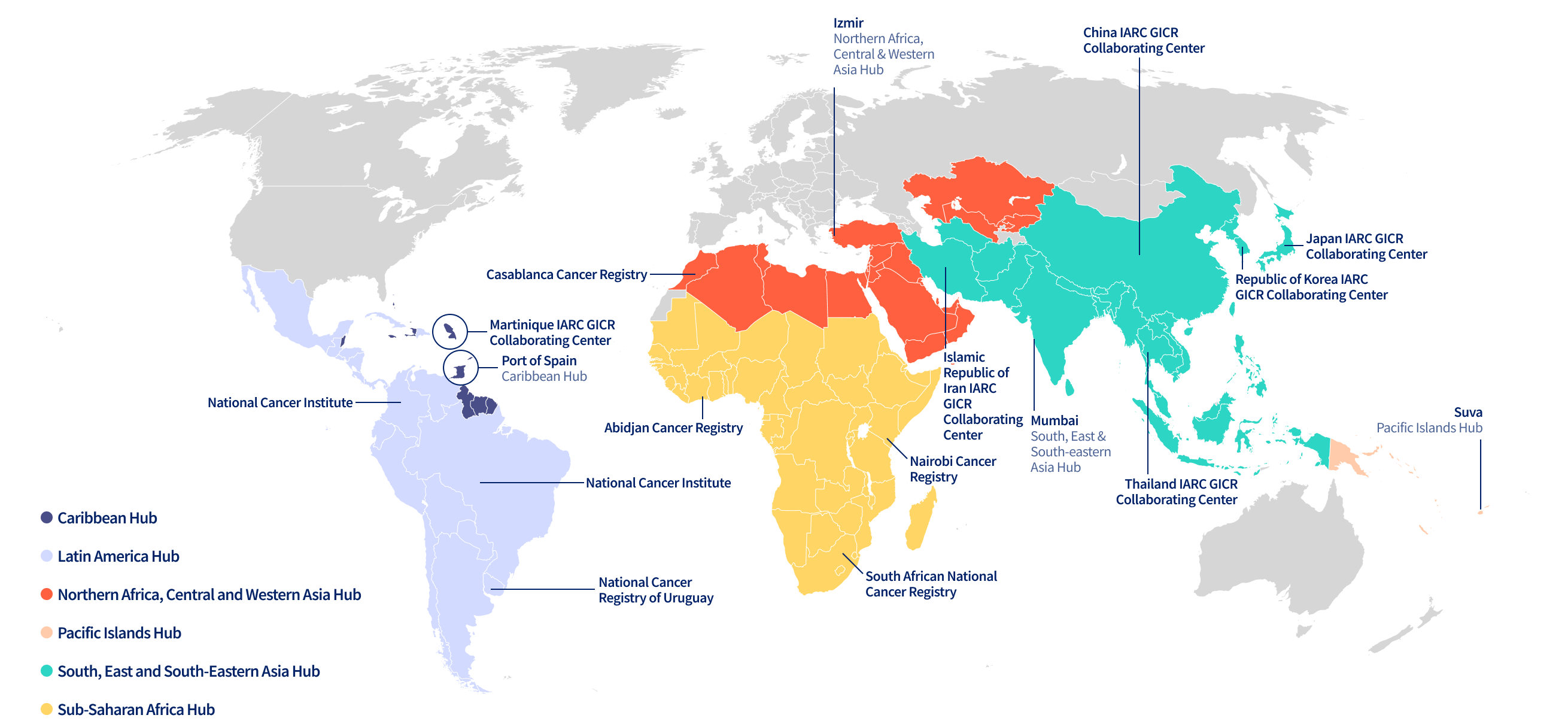Population-Based Cancer Registries
Globally, only one in three and four countries can report high-quality cancer incidence and cause-of-death mortality data, respectively.
Population-based cancer registries (PBCRs) are an essential foundation for the development and monitoring of national cancer-control plans, informing the planning of cancer services, and assessing the effectiveness of cancer-care delivery through benchmarking survival in different populations.
PBCRs represent a continual system of data collection, storage, validation, and analysis, with the recording and reporting of data undertaken according to international standards to ensure maximum comparability. They systematically collect cancer incidence and survival data for defined populations, including information on patient and tumor characteristics at diagnosis, including stage, type of treatment received, as well as follow-up of vital status.
“Local data from cancer registries are pivotal in improving outcomes and saving lives. It is time to invest in the real world and not a mathematical representation of it.”
While PBCRs may be national, more often, particularly in highly populated countries, the requirements for planning and monitoring national cancer-control programs (see the Cancer Continuum) can be achieved through one or more “sentinel” subnational PBCR. A controlled expansion of subnational PBCRs will increase national representativeness while curbing costs.
PBCRs are represented throughout the world by the International Association of Cancer Registries, an organization founded in 1966 that establishes standards and provides opportunities for cancer registry personnel to meet, exchange information, and receive training. Despite significant disparities in the status and quality of cancer registries worldwide, the number of high-quality PBCRs has increased (Figure 39.1) from 31 registries in 28 countries during the early 1960s (Cancer Incidence in Five Continents, Volume I) to 459 registries in 65 countries during 2013-2017 (Volume XII).
Number of countries, registries, and populations covered by Cancer Incidence in Five Continents (CI5) volume I to XII
The data – both submitted and compiled – is the major source of information for the national GLOBOCAN estimates, showcased in the IARC’s Global Cancer Observatory and the cancer statistics portrayed in The Cancer Atlas. In contrast to most countries in Europe and North America, many countries in Asia, Africa, Latin America, and Oceania have poor quality, or a complete absence of incidence data for cancer-control planning (Map 39.1).
To address this data inequity, the Global Initiative for Cancer Registry Development (GICR) was established by IARC as a global partnership to improve the availability of high-quality cancer registry data in transitioning countries. Six IARC Regional Hubs and accompanying IARC centres of expertise work with local partners to provide direct support to registries, deliver training, conduct research, and develop networks (Figure 39.2).
Global Initiative for Cancer Registry Development (GICR)’s Regional Hubs and Centers of Expertise worldwide, 2023
